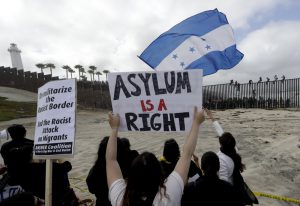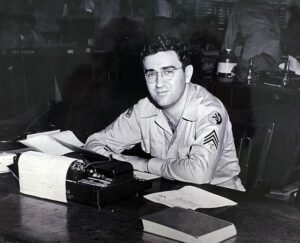Many people know of the Mexican holiday Día de Los Muertos, which is filled with vibrant colors and intricately painted faces. What many people don’t know is that this holiday originated over 3000 years ago with the Aztec empire. The Spanish Conquistadors first recorded a Día de Los Muertos celebration during the 16th century. When the Aztecs had begun this tradition, they weren’t remembering loved ones who passed, but they were worshiping the queen of the underworld and protector of the dead.1

This Aztec queen was Mictecacihuatl, “Lady of the Dead,” Queen of Mictlan.2 According to Aztec legend, Mictecacihuatl was sacrificed as an infant and placed in the underworld to become the wife of Miclantecuhtl, the king of the underworld. In the underworld, her role was to watch over the bones of past lives, which would be used to create new life in the living world. However, in order for the bones to be able to create new life, they needed to be stolen from Mictecacihuatl to be brought to the living world. As their protector, part of her own life would be carried with the stolen bones. Even after the bones were stolen, she would continue her duty to protect them by returning to the living world every year to make sure the bones were being properly taken care of. When the time came for her to return to the living world, the Aztecs celebrated Mictecacihuatl’s return with death festivals and traditional dances, to honor her for her protection of the bones that created life and to seek protection for those who died.3

The Aztecs celebrated Día de Los Muertos much differently than it is celebrated today due to the Spanish conquistadors and Catholicism. The Spanish changed the lives of the indigenous peoples wherever they went, from taking land for the Spanish throne to converting people to Catholicism. Many traditions changed, including those of Día de Los Muertos.4 The Aztecs laid out offerings for the King and Queen of the Underworld for the whole month of August, and the Spanish were the first outsiders to witness this honoring of Mictecacihuatl by the Aztecs. Not long after the Spanish exposure to this festival, the Spanish combined the Aztec tradition with Catholicism. Syncretism, the blending of Spanish and indigenous beliefs and practices, combined the Aztec traditions of Día de Los Muertos with the Spanish traditions of All Saint’s Day and All Souls Day.5 Some examples of syncretism between Catholicism and Día de Los Muertos are the symbols that are most recognizable with Día de Muertos, such as decorated skulls and skeletons, and the Spanish character “La Catrina,” who represents Mictecacihuatl.6 The merging of Catholicism with the Aztec religious beliefs began the evolution of how Día de Los Muertos, transforming how it is celebrated today.

Despite that the name Día de Los Muertos translates to Day of the Dead in English, the holiday is actually the celebration of life. Día de Los Muertos doesn’t focus on death and mourning of a loved one. It’s seen as a happy celebration where family members of all generations, deceased and alive, can be together as one. The traditions of this holiday have changed from honoring the queen of the underworld Mictecacihuatl to honoring those who have passed.7 It’s a time of colorful festivals and parades, beautifully painted colorful skulls, marigold flowers, decorated ofrendas, grave site visits and the smells of traditional Mexican foods and incense in the air. Although it is primarily celebrated in Mexico, some parts of the United States, especially cities and towns on the Mexican border, have adopted the tradition and celebrate the remembrance of their deceased loved ones.
- MasterFILE Complete, 2008, s.v. “Día de los Muertos, by Benjamin Perea. ↵
- Sin Jones, Mictecacihuatl, Santa Muerte, 2010, 1-16. ↵
- Sin Jones, Mictecacihuatl, Santa Muerte, 2010, 1-16. ↵
- Mark Lacy, Origins of El Día de Los Muertos: The Prehispanic Festival of the Dead Defies Cultural Invasions of Mexico, (History Institute for Culture), 1. ↵
- Mark Lacy, Origins of El Día de Los Muertos: The Prehispanic Festival of the Dead Defies Cultural Invasions of Mexico, (History Institute for Culture), 1. ↵
- Mark Lacy, Origins of El Día de Los Muertos: The Prehispanic Festival of the Dead Defies Cultural Invasions of Mexico, (History Institute for Culture), 1. ↵
- Christina Zarate, Día de Los Muertos, (Smithsonian National Museum of American History), 2-7. ↵



114 comments
Martina Rodriguez
Very interesting topic. I had no idea that the Aztecs even had a goddess of the underworld. While I had never heard of Mictecaihuatl before, her story wasn’t as unpleasant as I had thought. I loved how her visits to the world of the living and peoples adoration of her protection grew into the celebration we have today. It was a lovely story and evolution.
Gabriela Ochoa
Growing up my family has participated in dia de los muertos for our family members that have passed. Like most people I assumed that it was just to honor the people we have lost and to remember them and the things they did in their lives. To learn that it was originally to honor the queen of the underworld, Mictecacihuatl was interesting, they honored her because she protected something that was important to them which was the bones. I liked that the article showed what is still done today with the skulls and flowers and how it was similar to the way the people honored Mictecacihuatl.
Christopher Hohman
Nice article. I really like to celebrate the day of the dead. My high school used to go all out. We would paint skulls and we also made an alter. And we also ate traditional Mexican food. I love celebrating it too because it is just nice to be able to celebrate the lives that have passed and to remember how precious our own life is. I love how you elaborated on the blending of Spanish and Aztec culture that was really fascinating.
Rylie Kieny
I never knew the exact origins of this very popular holiday and I think the article did a very good job explaining it. I had no idea that the first version of Dia De Lost Muertos started as far back as the Aztecs. I think its very interesting how the holiday has involved and changed as outside influences fled in. This is a holiday I really enjoy as I appreciate the idea that we should celebrate death rather than view it as this dark force. The bright colors and parties that surround it bring the idea of death into a more positive light and allow those to positively remember those whom they have lost.
Ysenia Rodriguez
Día de Los Muertos is a beautiful holiday that I believed was captured well with the photos placed throughout the article. Variations of the holiday have spread across the world due to cultural differences and the mix of cultures as seen through the Spanish conquering of the Aztec Empire; however, I believe many people would agree that Día de Los Muertos is not a time of mourning, rather a time of celebration.
Alexander Manibusan
I’ve only heard of Mictecacihuatl, so it was nice to finally know a bit more about her. I find it so sad that the Aztecs were brutally mistreated by the Spanish and, on top of that, they were forced to believe certain things by them. In fact, sometimes the Aztec hid idols or images of their gods in churches so that they would worship them in secret. Nonetheless, it is very nice to now know the origins of the Día de Los Muertos.
Valeria Perez
I think El Dia de los Muertos is one of the most beautiful Mexican traditions. Unlike many cultures, Mexican people find a bright side to death by celebrating a loved one’s life. However, I was unaware of the Aztec traditions related to this day. It is interesting to see the way our holidays have transformed over time and how the combination between cultures can transform the event. Great article!
Andrea Cabrera
We’ve all heard about the Mexican holiday Día de Los Muertos. We see it all around pop culture, such as movies like Coco. I, personally, love this holiday. The vibrant colors give light and celebrate to memories of your love ones. I dressed as La Catrina for a costume party two years ago. It was nice to read how it all started. It is also interesting the contrast in how the Aztecs celebrated Día de Los Muertos much differently than how it is celebrated today.
Michael Hinojosa
I’m so glad I discovered this article! Growing up in San Antonio I always wanted to celebrate this holiday with my family whenever we had the chance to and while sadly my dreams of celebrating this amazing holiday never came true it was interesting to find out that this actually has roots in the aztec culture. The Aztecs aren’t something I knew too much about so it was cool that this article was able to relay the backstory of the holiday and the mythological origins it had as well!
Kaitlyn Killebrew
Living in San Antonio all my life I have heard of Día de Los Muertos, and I knew it translated to Day of the Dead but whenever it rolls around it had always seemed happy and never really knew why. I knew it was about honoring the dead but didn’t really understand why it seemed to be a festival, and before reading this article I didn’t know that 3,000 years ago it was celebrated entirely differently. Or that it was a mixture of Aztec and Catholicism practices.